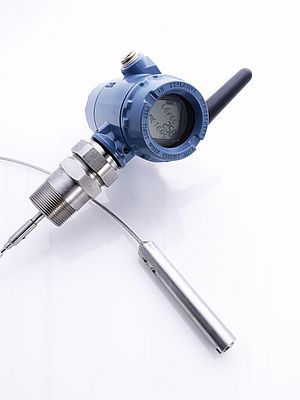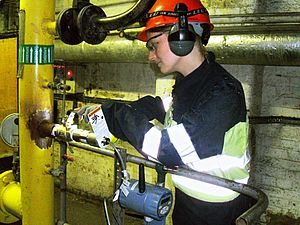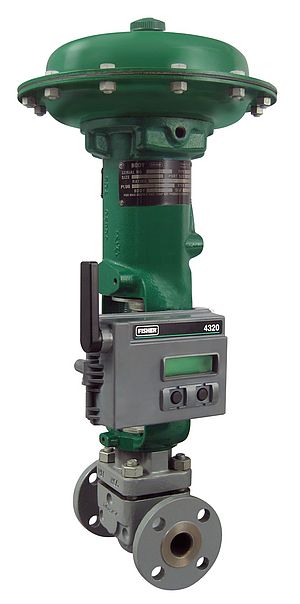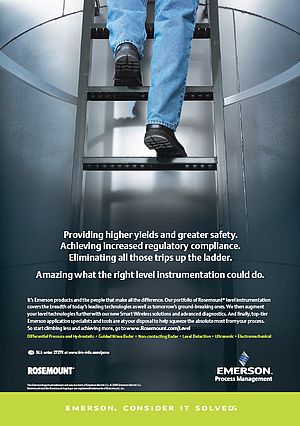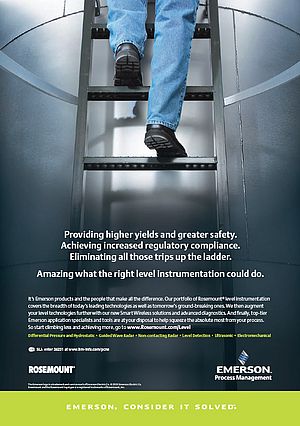At Schneider Weisse brewery conductivity sensors provide highly accurate measurements to minimize waste following clean-in-place (CIP) of fermentation and storage tanks and enable a potential increase in production Highly accurate four-electrode conductivity sensors are helping German brewer Schneider Weisse to optimize the clean-in-place (CIP) process at its Bavarian brewery, South Germany. Replacing aging existing sensors with accurate Rosemount Analytical 410VP sensors has enabled the brewer to optimize the CIP process. This has reduced the total caustic detergent, water and energy being used as well as saving valuable end product. In addition Schneider Weisse is now able to bring production back online quicker enabling a potential increase in total production. “We continually strive to improve our production processes in order to maximize output and efficiency,” said Norbert Appoltshauser, Automation Manager, Schneider Weisse. “We do this by taking advantage of the latest innovative technologies. We identified an opportunity to measure the interface between the CIP rinse water and end product more accurately, and we have been delighted with the results” Schneider Weisse has been brewing since 1872 and is best known for its premium quality Weiß, or wheat beers that are drunk in Europe, America, Canada, Hong Kong and even in the Dominican Republic. In a very competitive market, Schneider Weisse is continually reviewing opportunities for process optimization to remain competitive. CIP applications in the food and beverage industry present a number of challenges for conductivity sensors. Devices must be easy to clean and able to withstand rapid changes in temperature. Conductivity sensors used for this type of measurement are often encased in plastic and in general do not respond well to rapid temperature changes. They also protrude into the pipe, creating an intrusion, which can disrupt flow in smaller lines. These factors can reduce the dependability of the conductivity measurement. As brewers have to ensure the effectiveness of the CIP process, while minimizing product losses, the ability to optimize the process by introducing a more accurate instrument for the measurement of conductivity is attractive. Working in co-operation with GEA Brewery Systems, three existing electrode conductivity sensors installed within pipes supplying the fermentation and storage tanks were replaced with Rosemount Analytical 410VP sensors. The existing sensors were aging and unreliable, causing false switching during the different phases of the CIP process. The customer was also unable to source replacement parts. The sensors determine electrolytic conductivity which allows monitoring of the concentration of the clean-in-place (CIP) solution, and the interface between rinse water and end product. The CIP system is used to clean the process piping twelve times a day with each process including three water flushes of three minutes duration. The CIP process uses a caustic solution to wash through and ensure product integrity. The wash cycle includes a pre-flushing stage, followed by a caustic solution, an intermediate flushing, an acid solution, and then a final flush prior to restarting of production. During an initial four week trial period, Schneider Weisse quickly identified that the Analytical 410VP sensor was operating accurately and effectively. The accuracy of the conductivity and temperature measurements are critical to optimizing the process. Using the 410VP to identify the exact point at which the different phases start and stop, and when the interface between the CIP rinse water is replaced by in-specification beer, it has been possible to reduce the duration of each flush from three minutes to one minute. This has reduced the total flush time by 72 minutes a day. Minimizing the flush periods has reduced the overall water consumption by 10m3 per day. As well as delivering clear environmental benefits, using less wash water saves Schneider Weisse around €8000 a year (based on approximately 160 production days). Approximately 3000kW/h of electrical energy is also saved, reducing costs by a further €500 a year. With the faster detection of the different phases, Schneider Weisse sees the potential for further optimization and to eventually increase overall beer production. According to Anton Ladenburger, Sales Manager, GEA Brewery Systems, “The strength of the Rosemount device is that its offers improved levels of accuracy and reliability over traditional technology. Also, the Varivent connection (by GEA Tuchenhagen) allows the sensor to sit flat within the pipework avoiding potential crevices, and it can be easily fitted to the bottom of the pipe which ensures it is always wet.” The 410VP sensor’s four-electrode design provides exceptional linearity between 1uS/cm and 1,400,000mS/cm and responds extremely well to rapid temperature changes. The sensor has a flat sensing face consisting of four circular electrodes arranged in a row. The analyzer injects an alternating current through the outer electrodes and measures the voltage across the inner electrodes. The conductance of the electrolyte solution between the voltage electrodes is readily calculated from the measured current and voltage. Because the voltage measuring circuit draws almost no current, errors caused by series capacitance and cable resistance, which are significant in two-electrode measurements at high conductivity, are virtually eliminated. The sensors are located in different areas of the plant, where there is a mixture of 230 VAC and 24VDC supply, which resulted in Schneider Weisse having to use two different sensors in the past. By offering the capability to work using either 230VAC or 24VDC, the Rosemount 410VP could be applied in both areas of the plant, reducing inventory and training requirements “We are extremely confident of the new measurement system,” explained Appoltshauser. “The improved accuracy of the conductivity measurements has enabled us to pinpoint the exact point when the interface has passed through the process, allowing us to return to full production. With the new Rosemount conductivity measurement false switching is eliminated and the different CIP phases are detected within just two seconds, which is very fast.” Existing connections within the pipes enabled the fast installation of the factory calibrated 410VP sensors. Rosemount Analytical Model 1056 intelligent analyzers incorporating a simple to use menu navigation screen ensured that the sensors were extremely easy to set up. “The 1056 analyzers are very simple to work with and because the sensors are pre-calibrated the functional commissioning was straightforward, intuitive and self explanatory. This was very different to what we were used to,”
Sensors support CIP at bavarian brewery
At Schneider Weisse brewery conductivity sensors provide highly accurate measurements
- by Emerson Process Management - Rosemount Division
- October 1, 2009
- 396 views






